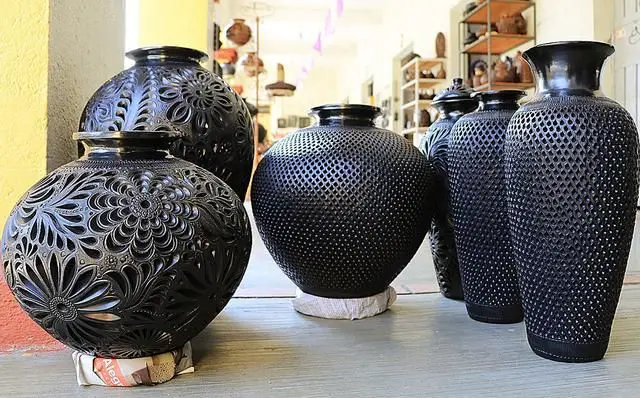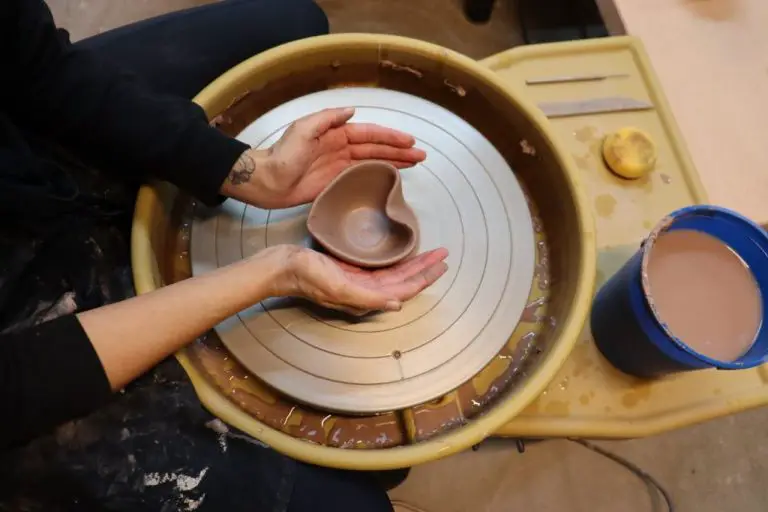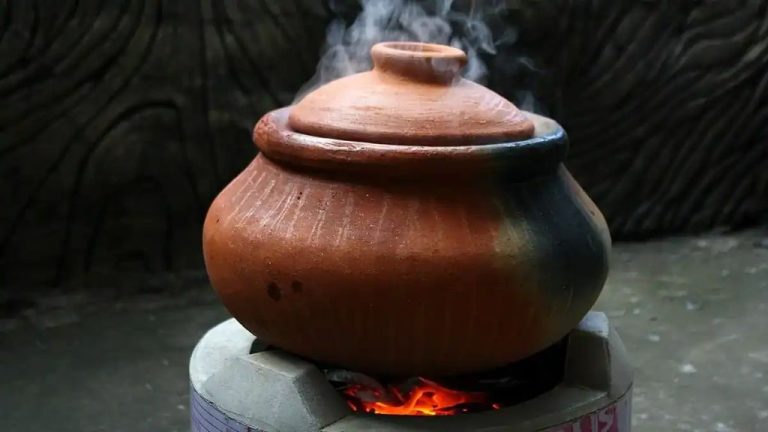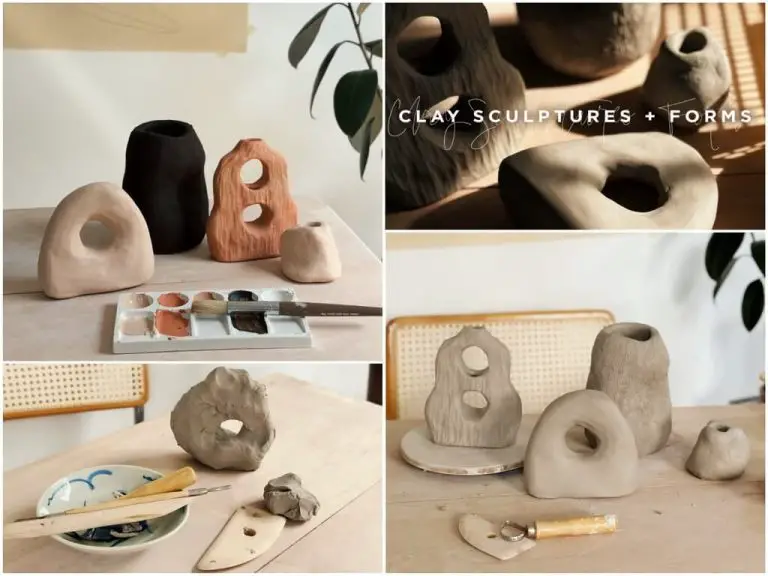What Is The Most Famous Native American Pottery?
Native American pottery has a long and rich history spanning thousands of years. Pottery making developed independently among different Native American tribes starting around 2000 BC. Since then, Native American pottery has continually evolved through various techniques, styles, purposes, and artistic visions. Today, Native American pottery remains an important cultural tradition carried on by Native artists.
Native American pottery serves many significant roles, including utilitarian, ceremonial, decorative, and artistic functions. clay vessels were essential for cooking, storage, and serving food and water. They were also central to cultural and spiritual practices. Native American pots reflected the natural materials available in different regions and expressed each culture’s unique aesthetic. Over time, Native American pottery became increasingly elaborate and artistic.
Some of the most acclaimed Native American pottery today comes from the Pueblos of New Mexico and Arizona. Their pots display incredible artistry and technical skill through precision painting, carved textures, and innovative shapes and forms. Other renowned pottery regions include the Southwest, Plains, Northwest Coast, and Eastern Woodlands. Exceptional Native American potters are honored as National Treasures and their work displayed in major museums.
This overview explores some of the most famous and influential Native American pottery styles and artists. It provides an introduction to the diverse beauty, innovation, and legacy of Native American ceramics.
Pueblo Pottery
Pueblo pottery originates from the Pueblo peoples of New Mexico. The Pueblo peoples consist of Native American tribes including the Hopi, Zuni, Acoma, and Laguna who have inhabited the region for over 2,000 years. They developed a distinctive style of hand coiled pottery using local clay and paints derived from rocks, minerals, and plants. Pueblo pottery served both utilitarian and ceremonial purposes.
The origins of Pueblo pottery date back to at least A.D. 500-700 during the Basketmaker III-Pueblo I periods. Early pottery consisted of basic gray wares used for cooking and storage. Artists began experimenting with painted designs during the Pueblo II period from A.D. 900-1150. Common early techniques included black-on-white painted wares and red wares produced through iron-rich clay. From A.D. 1150-1300 during the Pueblo III period, artists perfected their skills producing sophisticated painted vessels with intricate geometric and zoomorphic motifs.1
Each Pueblo group developed their own distinct style and methods for gathering clay and pigments from their local environments. Through generations of experimentation they perfected techniques like feathering, framing with multiple borders, use of fine lined brushes, and innovations in clays and pigments. The result was the evolution of different regional styles among the Hopi, Zuni, Acoma, Laguna, and other Pueblos.
Navajo Pottery
Navajo pottery has its origins in the Ancestral Puebloans (Anasazi) who lived in the Four Corners region over 2,000 years ago. The Navajo learned ceramic techniques including coiling, scraping, polishing and painted decoration from the Pueblo peoples after settling in the Southwest in the 15th century.
Traditional Navajo pottery tends to have rounded bottoms, efficient shapes, and decorative elements based on Navajo culture. Common motifs include deer, horses, rainbows, and geometric shapes. Natural earthen pigments derived from things like beeplant leaves, clays, and minerals are used for colors. Forms of decoration include painting and impressions using tools to etch designs into wet clay.
According to the Taos Trading Post, “By around 1800 Navajo pottery was being produced in large quantities.” The Navajo are known for black-on-white painted pottery that was traded with the Pueblos and Spanish settlers.
Anasazi Pottery
The Anasazi people were a pre-Columbian Native American culture that lived primarily in the present-day Four Corners area of the United States from approximately 600-1300 AD.
Anasazi pottery developed from basket forms into a distinctive style known for white to grey coloring and black painted designs. Common motifs included birds, feathers, animals, and geometric patterns made from lines and squares.
Some of the most notable Anasazi pottery came from the Chaco Canyon area in present-day New Mexico, where potters created cylinder jars, mugs, bowls, and pitchers using local clay. Their pots were often painted with black geometric patterns on a white background known as “black on white” pottery.
According to this source, Anasazi pottery designs influenced the later Pueblo Native American cultures in the Southwest. Their elegant black-on-white style has become iconic of the Ancestral Puebloan peoples.
Mimbres Pottery
Mimbres pottery originated in the Mimbres Valley of southwest New Mexico around 200-1150 CE. The Mimbres people are best known for their black-on-white figural pottery featuring geometric patterns and depictions of animals, people, and cultural motifs. The pottery was an integral part of Mimbres culture and was primarily used for rituals and ceremonies.
Mimbres designs evolved over time but maintained stylistic continuity. Early classic period (200-1000 CE) pottery featured simple horizontal banding, bold geometric chevrons, and some figurative elements. The pottery from the late classic period (1000-1150 CE) exhibited greater precision, more elaborate designs, and increased use of figurative elements like rabbits, deer, and stylized human faces. Many Mimbres pots featured a distinctive “kill hole” punctured in the vessel after a burial to release the pot’s spirit.
Common motifs in Mimbres pottery include geometric patterns, stylized butterflies, dogs, macaws, jackrabbits, deer, fish, and images of daily life like hunting and planting corn. One frequently depicted ritual practice is the communal rabbit hunt. Figures were often framed by geometric shapes and negative space was filled with patterns.
Mimbres pottery production seemed to cease around 1130 CE when the Mimbres people abandoned their villages for reasons unclear to scholars. Today, Mimbres pottery provides a vivid picture of the culture, artistry, and spiritual beliefs of the Mimbres people.
To learn more, see this article on the history of Mimbres pottery in New Mexico: [1]
[1] https://www.newmexicomagazine.org/blog/post/silver-city-mimbres-pottery-history/
Hopi Pottery
The Hopi people have inhabited northeastern Arizona for over 1,000 years and are renowned for their distinctive pottery traditions (Native American Hopi Pottery). Hopi pottery reflects the rich culture and spiritual beliefs of the Hopi people. Some common motifs and symbols found on Hopi pots include kachina figures, corn, eagles, and clouds.
Hopi pottery dates back to around 500 CE when the Hopi settled in pueblos and began making clay vessels for utilitarian purposes like storing food and water. By 1300 CE, the Hopi had refined their pottery techniques and began producing decorated wares. Hopi artists use natural clay dug from the earth and employ traditional techniques like pinch pots, coiling, and polishing (The Hopi Pueblos | Native American Pottery).
Hopi pottery holds cultural and ceremonial significance. Ceremonial kachina dolls are carved from cottonwood root and painted with natural pigments on a clay base. Hopi artists also create decorative pots, storyteller figurines, tiles, and vases. The natural clay tones, hand-painted designs, and firing methods produce the unique colors and textures of Hopi pottery.
Santa Clara Pottery
The Santa Clara Pueblo, located just north of San Ildefonso in New Mexico, is known for their polished black pottery. According to the Santa Clara Pueblo’s website, the roots of their pottery tradition date back to the 1880s, when local potters began making pieces to sell to tourists visiting the railroad. (Santa Clara Pueblo | Native American Pottery)
Santa Clara artists specialized in making blackware using native clays with high iron content. The pottery is fired in a low-oxygen environment, which gives it the distinctive black color. The pottery is then burnished and polished to create a smooth, glass-like surface. Common shapes include jars, bowls, plates, and vessels used in traditional ceremonies. (Bureau of Indian Affairs)
Santa Clara pottery often features geometric designs like circles, lines, and zigzags painted on with plant-based pigments. Traditional motifs include rain, clouds, lightning, and feathers. While staying true to these long-held techniques and styles, Santa Clara potters also innovate with new shapes and designs. Today, there are over 200 active potters continuing the blackware tradition at Santa Clara Pueblo. (CandD Gifts)
Acoma Pottery
Acoma Pueblo is located in New Mexico and is one of the oldest continuously inhabited communities in North America, dating back to around the 12th or 13th century A.D. 1 The Acoma people are renowned for their pottery, which has been produced in the area for centuries. The clay found near Acoma Pueblo is especially suitable for the creation of thin-walled pottery.
Archaeologists believe that Acoma pottery originated in the early 13th century, based on shards and whole vessels found through excavations. The potters of Acoma specialized in large, painted storage jars as well as thinner vessels used for cooking and serving food. The designs and shapes of Acoma pottery have evolved over the centuries as outside influences and new techniques were incorporated.
One of the hallmarks of traditional Acoma pottery is the thin walls, with some vessels only 1/16th of an inch thick. This was achieved by expert handling and smoothing of the clay coils during construction. Pigments derived from natural materials like plants and minerals were used to paint geometric and symbolic designs on the pottery.
Today, Acoma pottery continues to use traditional materials and methods passed down through generations of potters. Families maintain their own styles while creating infinitely varied designs. Modern Acoma pottery represents an unbroken creative tradition while incorporating new styles and innovations.
Popular Techniques
Native American potters employed several key techniques to create their distinctive pottery styles. Three of the most common and important techniques included:
Coiling
The coiling technique involves rolling long coils of clay and then stacking them on top of each other to build up the walls of the vessel. The coils are then smoothed together from the inside using fingers, bones, stones, or wood scrappers. Coiling was used by many Native American groups including the Anasazi, Mimbres, and Pueblo peoples. According to one source, “When creating a piece, Native American potters would roll out ‘snakes’ or coils of clay and then stack them to form the vessel’s shape.”1
Scraping
Scraping refers to the process of thinning and evening out the coils and walls of the pottery vessel. Potters would use tools made of bone, wood, or stone to scrape away excess clay and smooth the interior and exterior walls. Scraping helped compress the coils together and even out the thickness of the vessel walls. According to one account, “Scrapers were important tools used to smooth the surfaces of coiled pots.”1
Polishing
After the vessel was shaped and scraped, potters would polish the surface using smooth stones. Polishing helped compact the clay particles and create a smooth, finished surface. A variety of polishing tools were used including sandstone, hematite stones, sherds, and gourds. Polishing rounded the rim and lip of vessels and created the recognizable sheen seen on many Native pottery pieces. As described by one source, “Surfaces were carefully burnished and polished with smooth stones.”1
Conclusion
Native American pottery has a rich history and tradition in the Southwest. The most influential pottery styles include the black-on-white geometric designs of the Anasazi, the simple elegance of Santa Clara pottery, the exquisite paintings and crazing of Acoma pottery, and the innovative shapes and sgraffito designs of Hopi potters. Master artists like Maria Martinez of San Ildefonso Pueblo and Nampeyo of Hopi mesas created iconic pottery that transformed the artform. While techniques and materials have evolved over time, the Native American potters of New Mexico and Arizona carry forward a cultural legacy spanning centuries.




